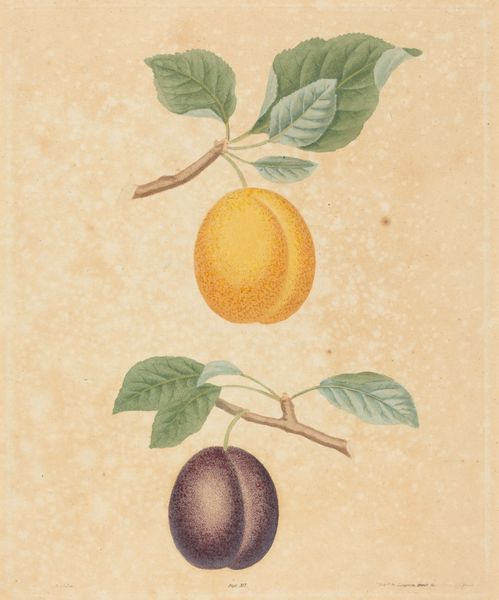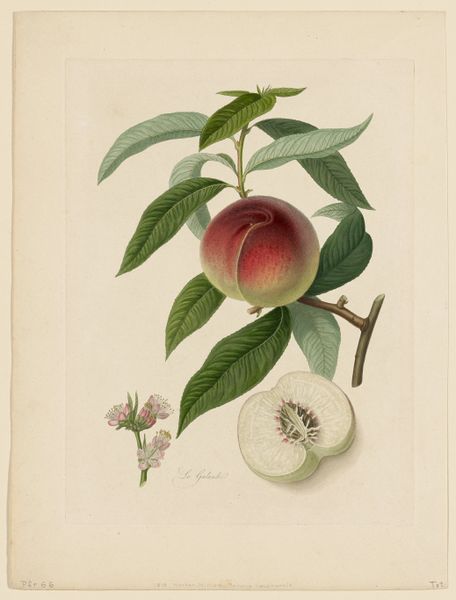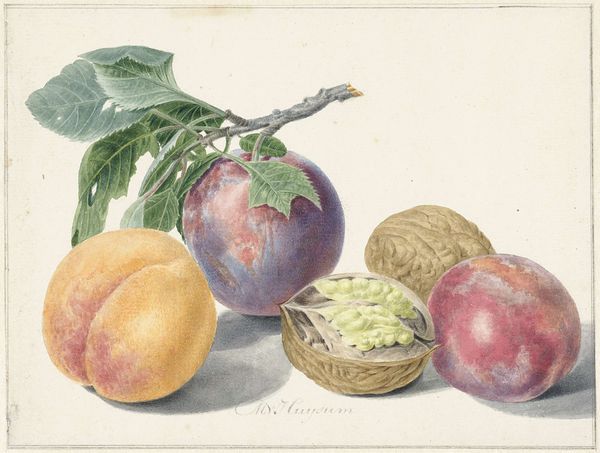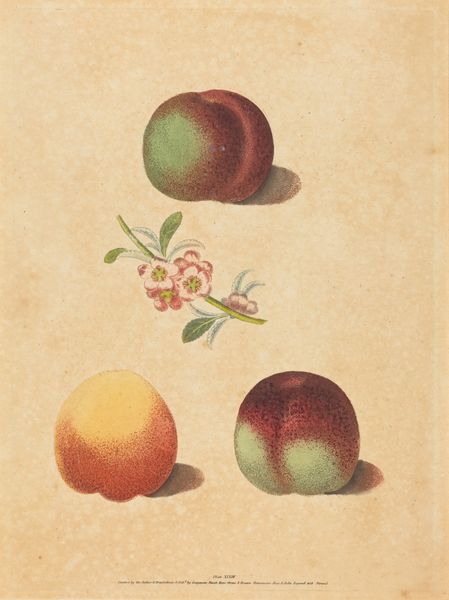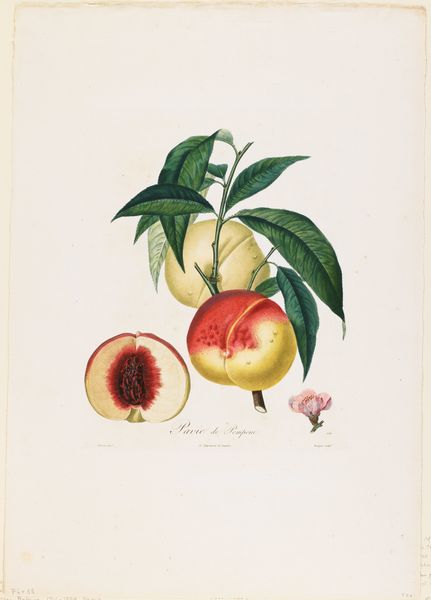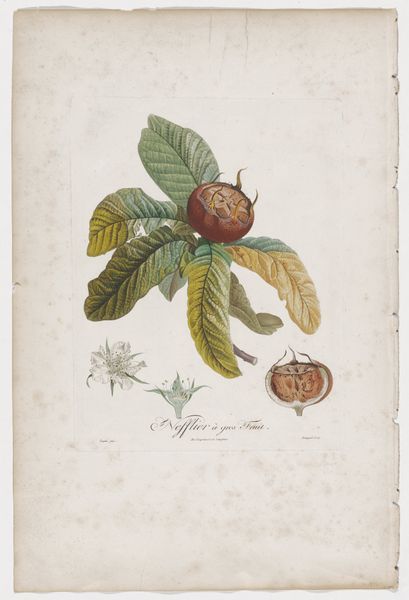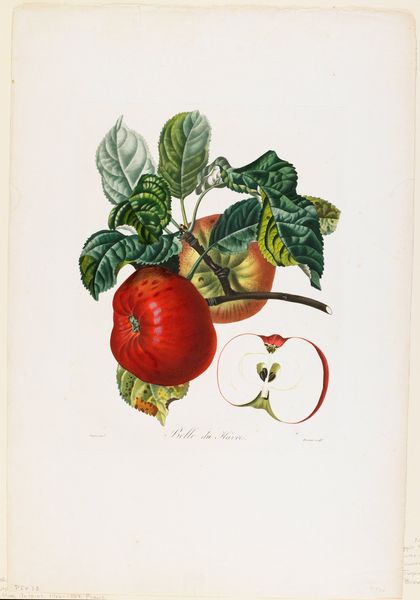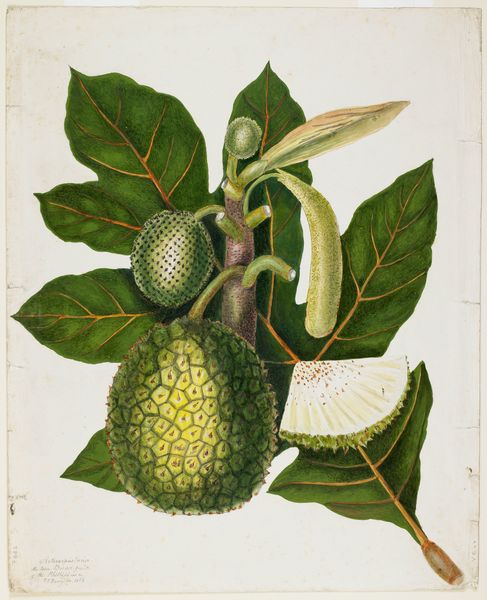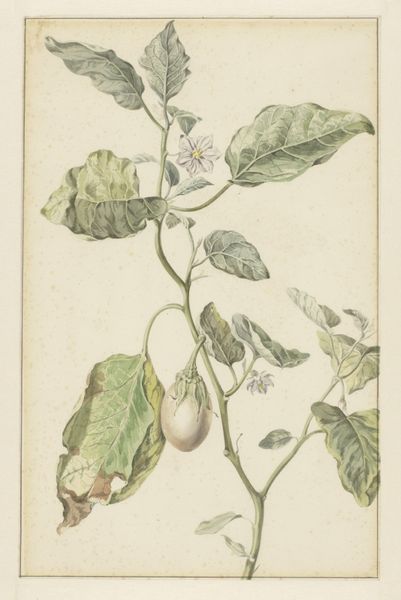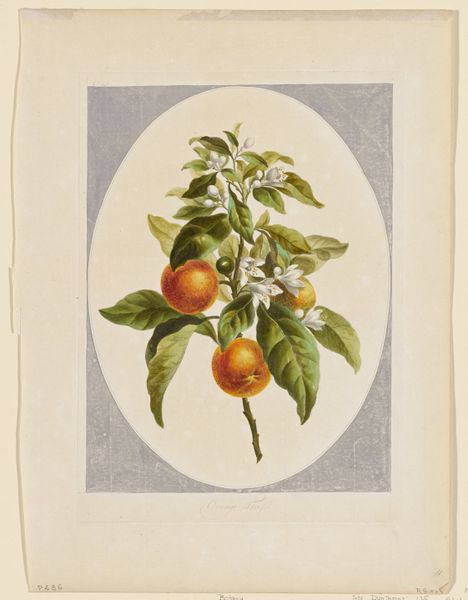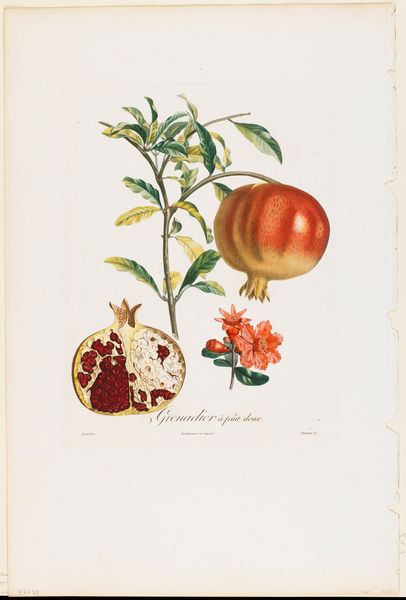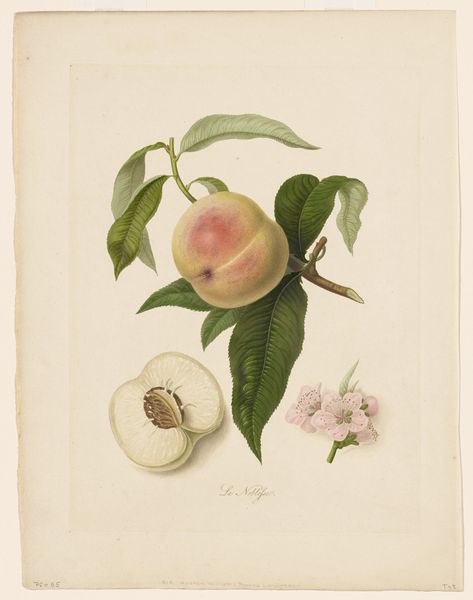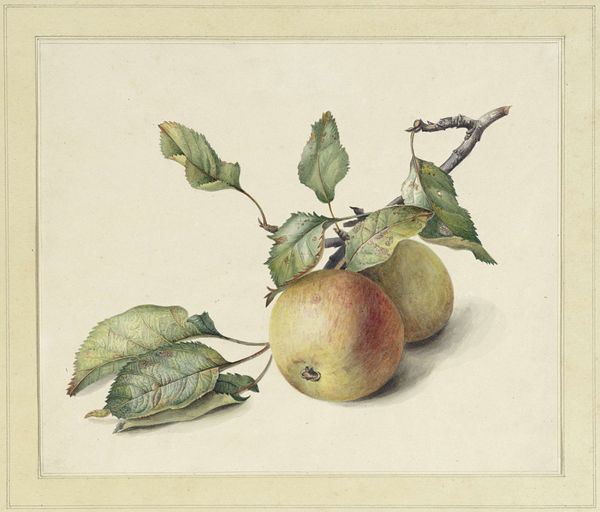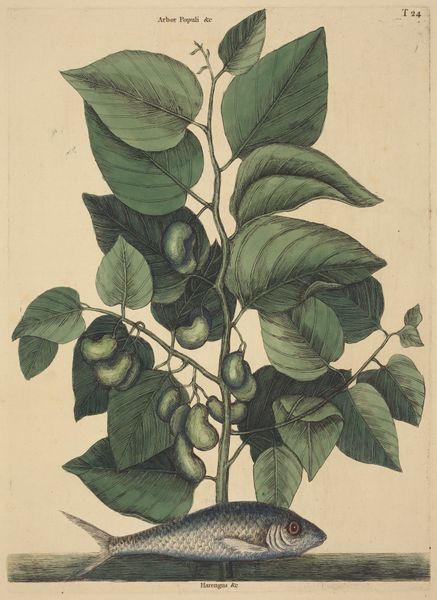
drawing, print, watercolor
drawing
egg art
botanical illustration
culinary art
watercolor
food illustration
green background
botanical photography
botanical drawing
watercolour illustration
academic-art
botanical art
warm toned green
Dimensions: plate: 31.4 x 24 cm (12 3/8 x 9 7/16 in.) sheet: 39.1 x 29.1 cm (15 3/8 x 11 7/16 in.)
Copyright: National Gallery of Art: CC0 1.0
Curator: This print by Louis Bocquet, titled "Galo-Bayeux," showcases a meticulous botanical illustration, most likely dating from the 18th or 19th century, given the style. Editor: It has a certain stark elegance. The almost scientific precision with which the apple and its foliage are rendered feels cool, almost clinical, despite the vibrant watercolor washes. Curator: Yes, the academic-art style truly lends that scientific, classifying gaze. Fruit and botanical illustrations served important functions, and weren't necessarily perceived in terms of emotional resonance. Before photography, detailed illustrations like this were crucial for documenting the natural world and standardizing information. Editor: I wonder about the choice to bisect one apple, while the other hangs, ripe, on the branch. The contrast is certainly striking. It emphasizes interiority versus exteriority and invites consideration about ripeness and the cycle of life. There are also wormholes, or are those spots meant to show signs of natural processes or age? Curator: That is where our perception clashes with that older style. The slightly damaged fruit can also be viewed as evidence of "realism," including aspects typically sanitized out of idealized pictures, such as insects. Remember the public role such botanical studies played. Their intent was education through observation. While Bocquet was not always strict about only showing realistic flaws of apples, here the natural blemishes might be intentional and reveal cultural attitudes regarding cultivation, especially given the piece's potential era. Editor: The title itself hints at something, but beyond that, what symbolic weight do apples bear culturally in France at that time? Curator: Ah, here the clues do tend to dry up for certainty! Apples are a symbol with varied meanings. Generally, they carry some connotation of abundance or earthly pleasure. But perhaps "Galo-Bayeux" might directly name the specific varietal the print displays, acting as pure documentary. Its social meaning emerges from use in fields, agricultural science, pomology—its practical contribution rather than deeper allegories. Editor: Perhaps that's the beauty of it. While deeply rooted in documentation, a contemporary audience sees beyond that, recognizing timeless themes within this straightforward illustration. The academic is now suffused with other potential significations of growth, decay, and interior states. Curator: Exactly! It serves to demonstrate how meaning accrues to imagery across history, adding richness. Editor: Yes, a deceptively simple image offering fertile ground for interpretation, from documentation to cultural symbolism, as is typical.
Comments
No comments
Be the first to comment and join the conversation on the ultimate creative platform.
